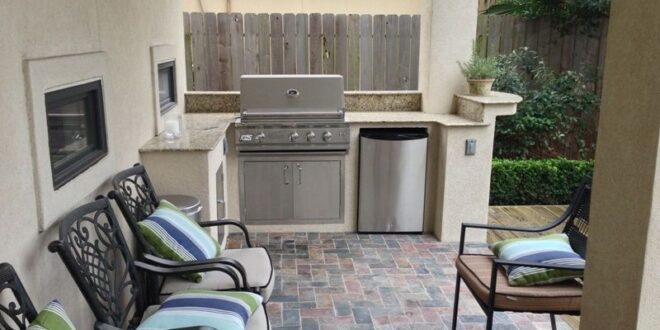Transforming Your Backyard: The Allure of Outdoor Kitchens
Imagine stepping outside into your own private sanctuary, a place where the aroma of grilling meats mingles with the laughter of friends and family. An outdoor kitchen isn’t just a trend; it’s a lifestyle enhancement, a way to seamlessly blend the comforts of indoor living with the joys of the great outdoors. But before you start firing up the grill, careful planning is essential. This comprehensive guide will walk you through every step of outdoor kitchen space planning, ensuring your dream oasis becomes a reality.
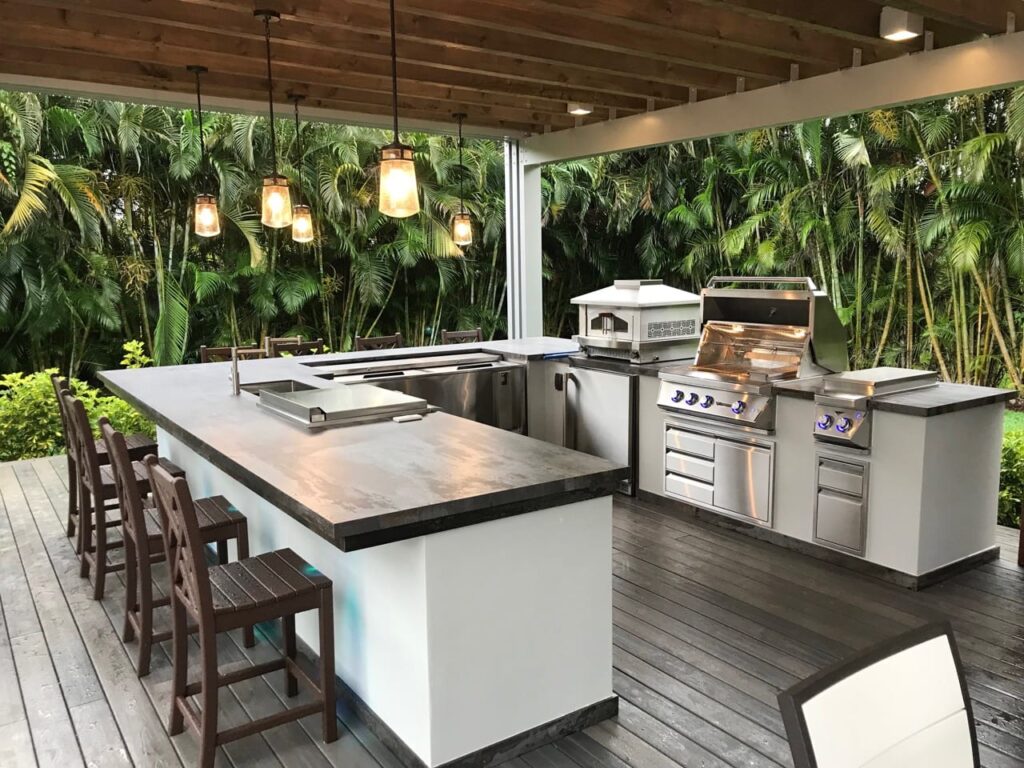
Why Meticulous Planning is Key
Rushing into an outdoor kitchen project without a solid plan is like building a house on sand. You might end up with a beautiful structure, but it won’t stand the test of time or function as intended. Planning allows you to:
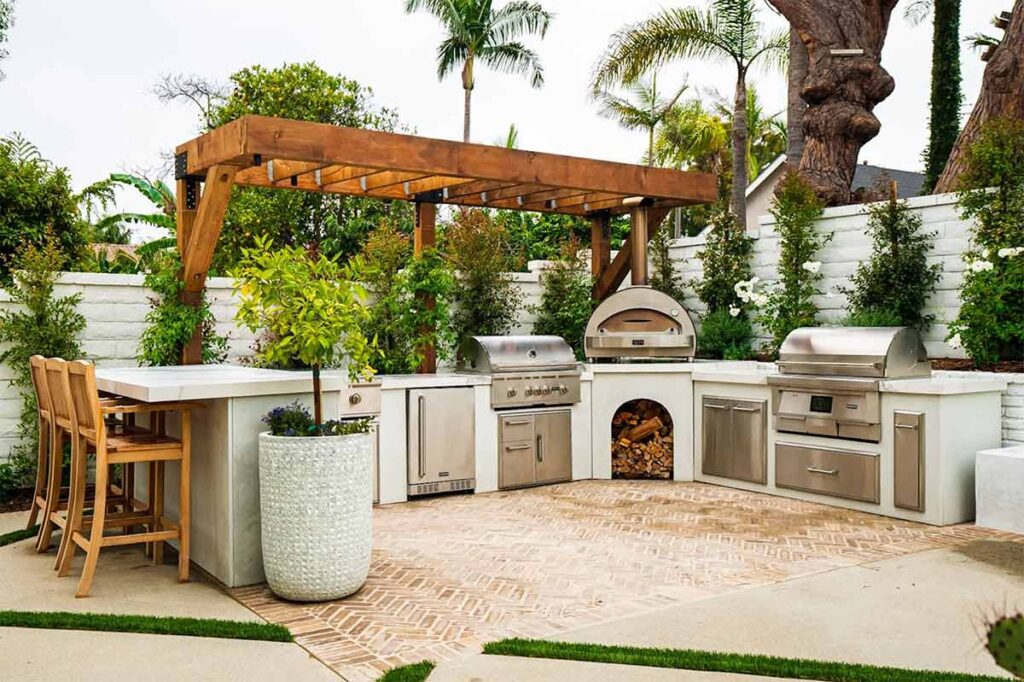
- Optimize Space: Maximize the use of your available outdoor area, ensuring a comfortable and functional layout.
- Avoid Costly Mistakes: Prevent unnecessary expenses by carefully considering materials, utilities, and design choices upfront.
- Enhance Functionality: Design a kitchen that perfectly suits your cooking style and entertaining needs.
- Increase Property Value: A well-designed outdoor kitchen can significantly boost your home’s resale value.
- Ensure Safety and Compliance: Adhere to local building codes and safety regulations to avoid potential hazards.
Step-by-Step Guide to Outdoor Kitchen Space Planning
1. Define Your Vision and Needs
Before you even pick up a measuring tape, take some time to visualize your ideal outdoor kitchen. Ask yourself these questions:
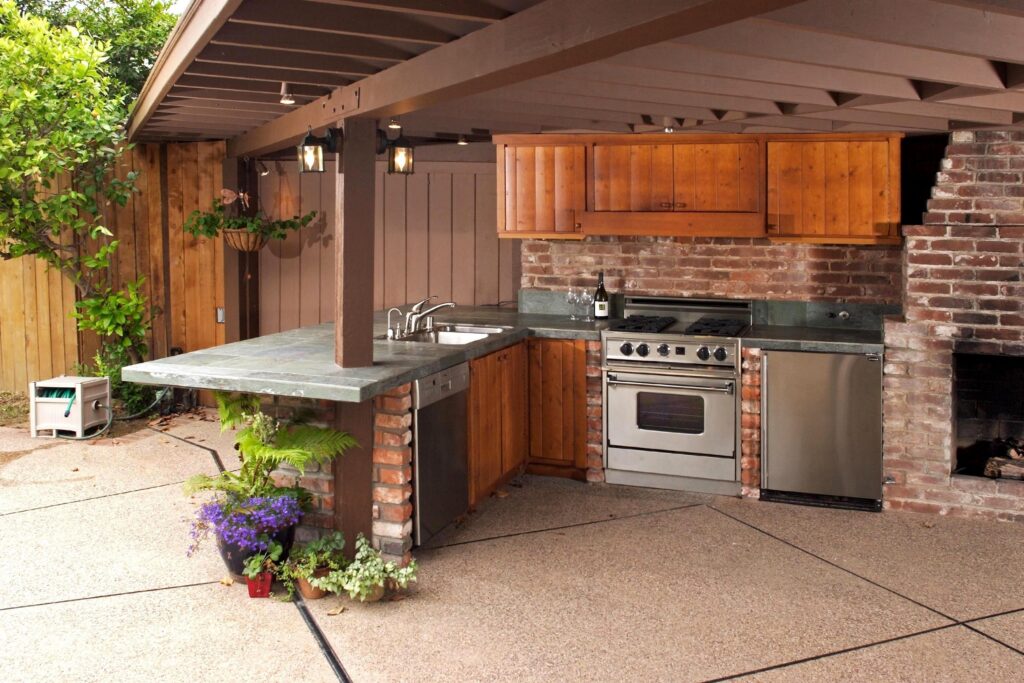
- How will you primarily use the space? (e.g., family meals, large gatherings, casual barbecues)
- What type of cooking will you be doing? (e.g., grilling, smoking, baking, pizza making)
- How many people will you typically be entertaining?
- What features are essential to you? (e.g., grill, smoker, pizza oven, refrigerator, sink, bar area, seating)
- What is your budget?
- What style are you aiming for? (e.g., modern, rustic, traditional)
Answering these questions will provide a solid foundation for your design and help you prioritize your needs. Consider creating a mood board with images of outdoor kitchens you admire. This will help you solidify your vision and communicate your preferences to designers or contractors.
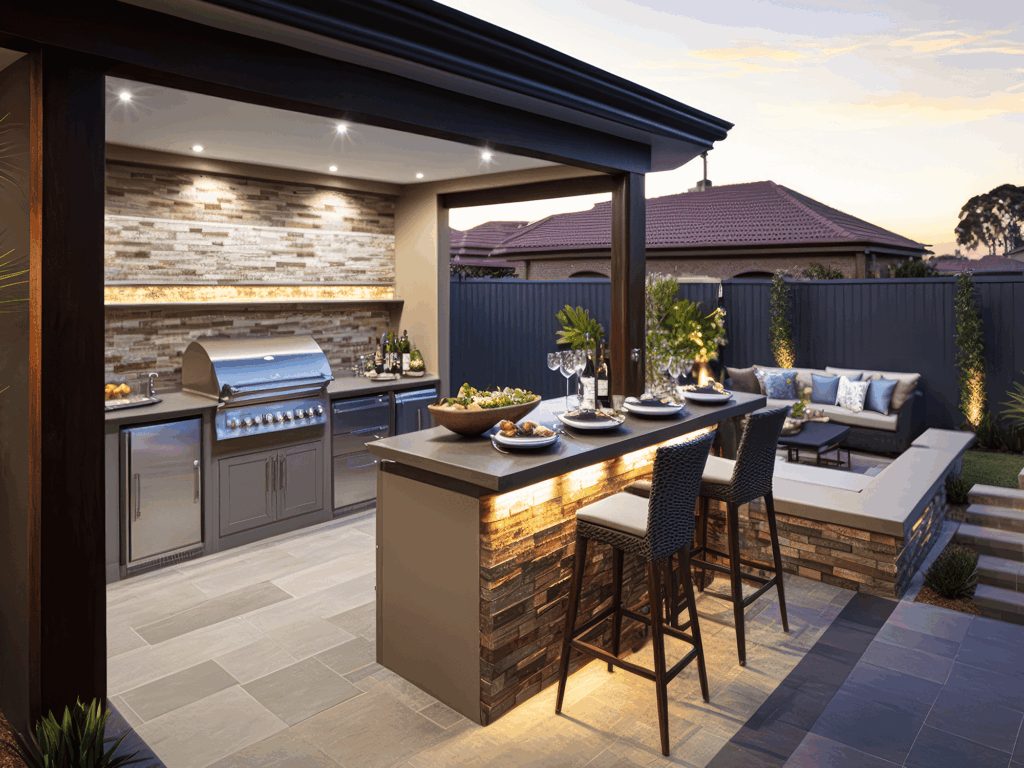
2. Assess Your Outdoor Space
Now it’s time to take a good look at your backyard and consider its limitations and opportunities:
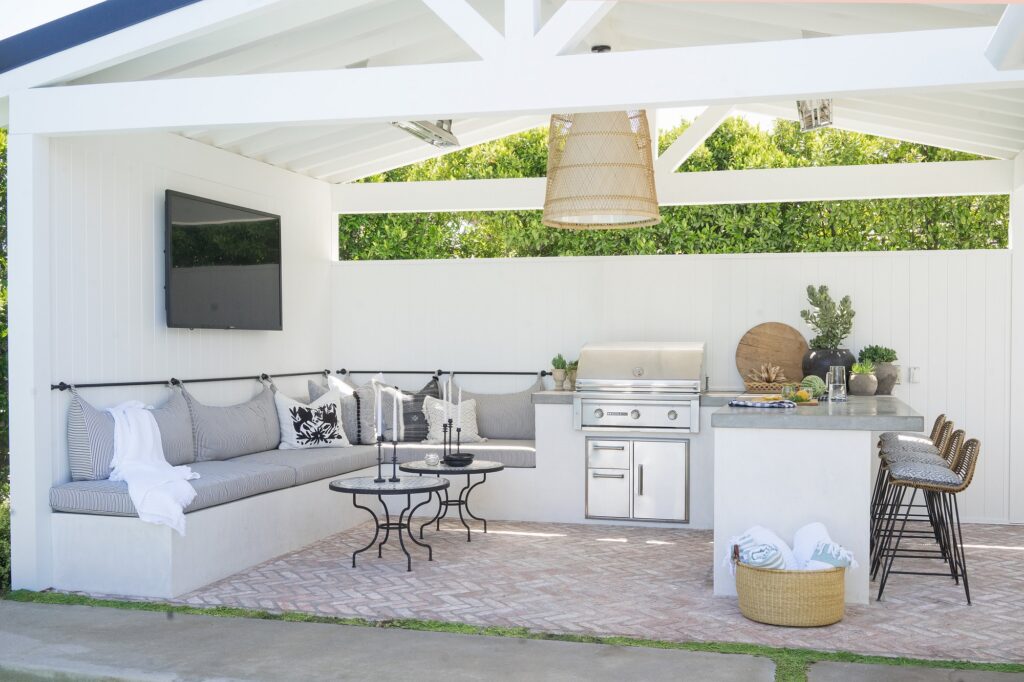
- Measure the Available Space: Accurately measure the area where you plan to build your outdoor kitchen. Consider the shape and dimensions of the space, as well as any existing structures or landscaping features.
- Evaluate the Terrain: Is the ground level? Are there any slopes or uneven surfaces that need to be addressed? Leveling the ground may be necessary for proper construction.
- Consider Sun Exposure and Wind: Note the direction of the sun throughout the day and the prevailing wind patterns. This will help you determine the best location for your kitchen to minimize glare and protect it from the elements.
- Assess Proximity to Utilities: Consider the proximity of your kitchen to existing gas lines, water lines, and electrical outlets. The closer you are to these utilities, the easier and less expensive it will be to connect them to your outdoor kitchen.
- Evaluate Accessibility: Ensure easy access to your outdoor kitchen from the house and other areas of the yard. Consider pathways and walkways that will allow for convenient movement of food, drinks, and guests.
- Think About Privacy: Consider your level of privacy and whether you need to add screening or landscaping to create a more secluded space.
3. Create a Functional Layout
The layout of your outdoor kitchen is crucial for both functionality and aesthetics. Here are some key considerations:
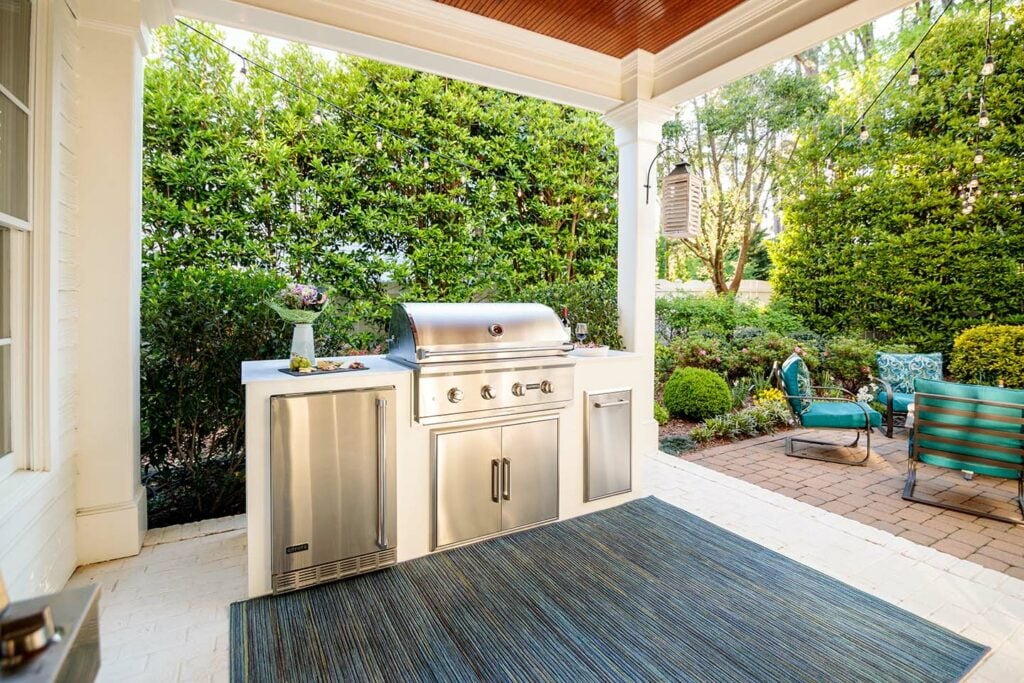
- The Work Triangle: Apply the principles of the work triangle (cooktop/grill, sink, refrigerator) to create an efficient and ergonomic workspace. The distances between these three points should be relatively short to minimize wasted steps.
- Counter Space: Provide ample counter space for food preparation, serving, and entertaining. Consider different countertop materials, such as granite, concrete, or stainless steel.
- Storage: Incorporate sufficient storage for cookware, utensils, grilling accessories, and other supplies. Cabinets, drawers, and shelves can help keep your outdoor kitchen organized and clutter-free.
- Seating: Include comfortable seating for guests to relax and enjoy the outdoor space. Consider different seating options, such as bar stools, dining tables, or lounge chairs.
- Traffic Flow: Ensure that the layout allows for easy movement of people around the kitchen area. Avoid creating bottlenecks or tight spaces that can impede traffic flow.
- Zoning: Divide your outdoor kitchen into distinct zones for cooking, food preparation, dining, and lounging. This will help create a more organized and functional space.
4. Choose the Right Appliances and Features
The appliances and features you choose will greatly impact the functionality and enjoyment of your outdoor kitchen. Here are some popular options:
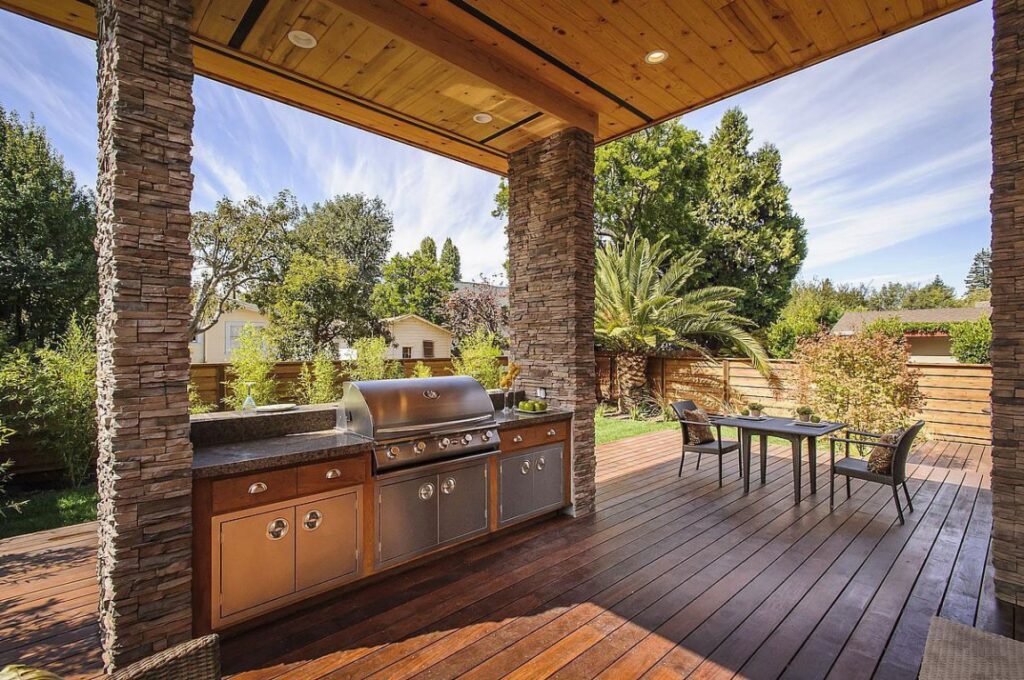
- Grill: A high-quality grill is the centerpiece of most outdoor kitchens. Consider different types of grills, such as gas, charcoal, or pellet grills, and choose one that suits your cooking style.
- Smoker: If you enjoy slow-cooked meats, a smoker is a great addition to your outdoor kitchen.
- Pizza Oven: A pizza oven can add a unique and exciting element to your outdoor cooking experience.
- Refrigerator: An outdoor refrigerator is essential for keeping food and drinks cold and readily accessible.
- Sink: An outdoor sink is convenient for washing produce, cleaning dishes, and general cleanup.
- Side Burner: A side burner can be used for cooking sauces, soups, or other side dishes.
- Ice Maker: An ice maker is a convenient feature for keeping drinks cold and refreshing.
- Bar Area: A bar area with seating and a built-in cooler can be a great addition for entertaining guests.
- Lighting: Outdoor lighting is essential for creating ambiance and ensuring safety. Consider different types of lighting, such as string lights, spotlights, and landscape lighting.
- Heating: Patio heaters or fire pits can extend the usability of your outdoor kitchen into the cooler months.
- Entertainment System: Consider adding a sound system or outdoor television for entertainment.
When selecting appliances, prioritize quality, durability, and energy efficiency. Choose appliances that are specifically designed for outdoor use to withstand the elements.
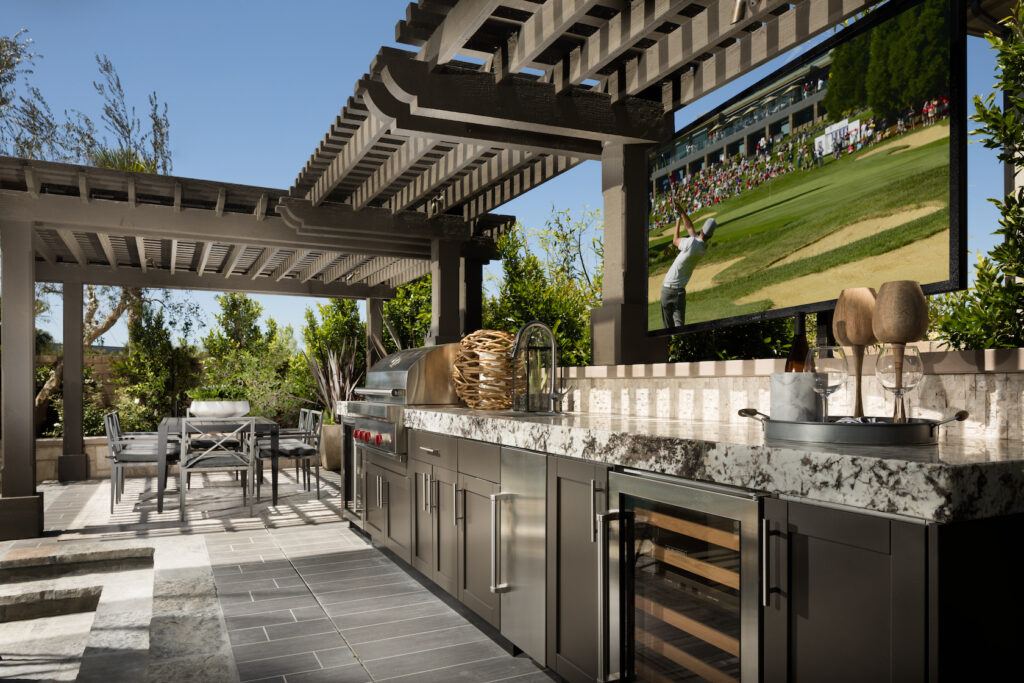
5. Select Durable and Weather-Resistant Materials
The materials you choose for your outdoor kitchen will significantly impact its longevity and appearance. Here are some popular options:
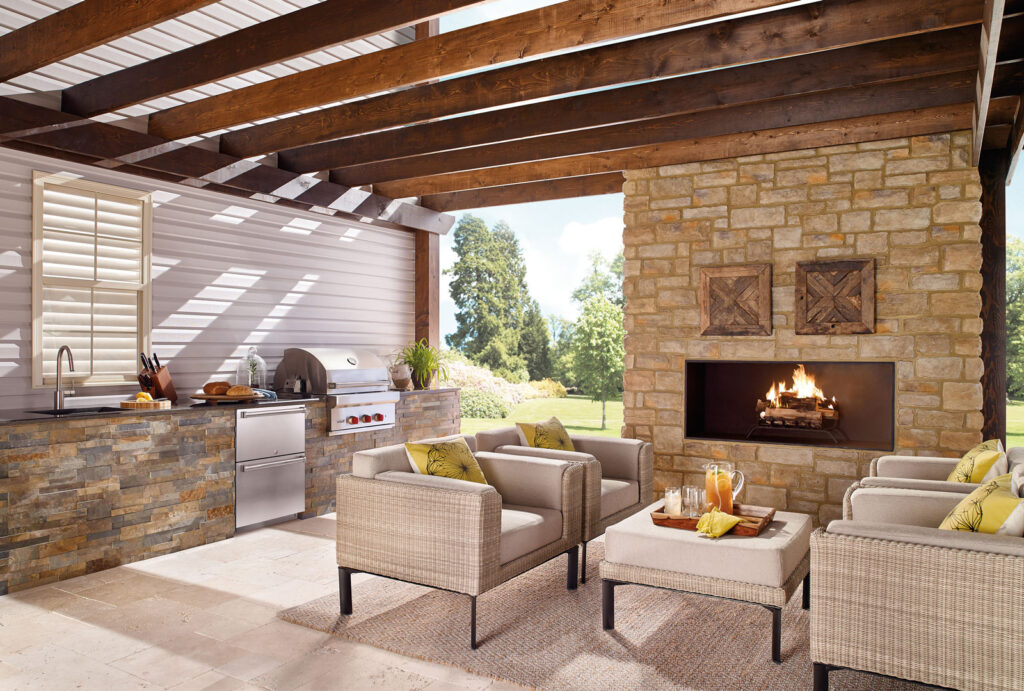
- Countertops: Granite, concrete, stainless steel, and tile are all durable and weather-resistant countertop options.
- Cabinetry: Stainless steel, marine-grade polymer, and treated wood are all good choices for outdoor cabinetry.
- Flooring: Concrete, pavers, stone, and composite decking are all durable and slip-resistant flooring options.
- Grill Enclosures: Stone, brick, stucco, and stainless steel are all popular materials for grill enclosures.
Choose materials that are resistant to moisture, UV rays, and extreme temperatures. Consider the overall style of your outdoor kitchen and select materials that complement your design aesthetic.
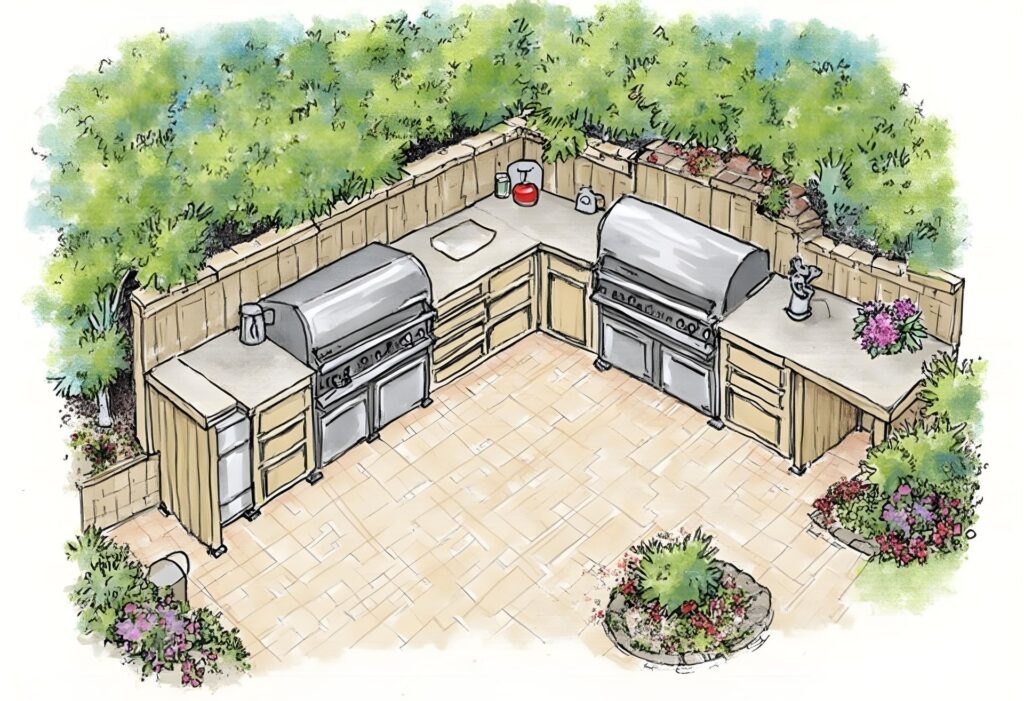
6. Consider Ventilation and Safety
Proper ventilation is essential for outdoor kitchens, especially if you are using gas appliances. Ensure that your grill and smoker are properly ventilated to prevent the buildup of carbon monoxide. Follow all local building codes and safety regulations.
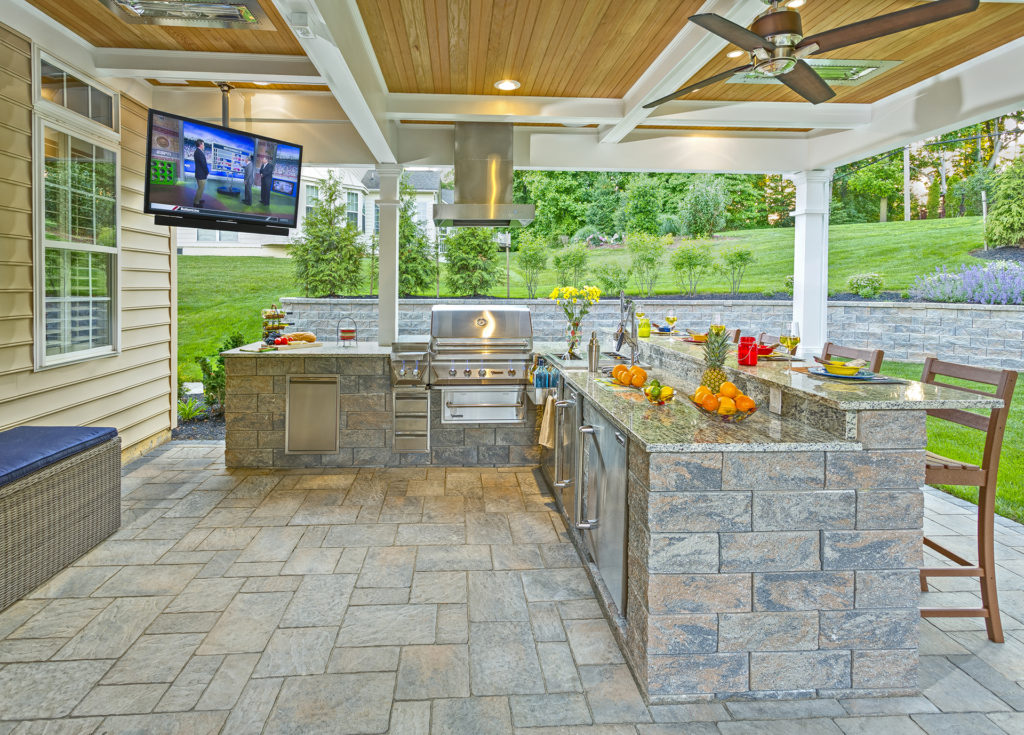
Install a fire extinguisher in your outdoor kitchen and familiarize yourself with its operation. Keep flammable materials away from heat sources. Consider adding a safety shut-off valve to your gas line.
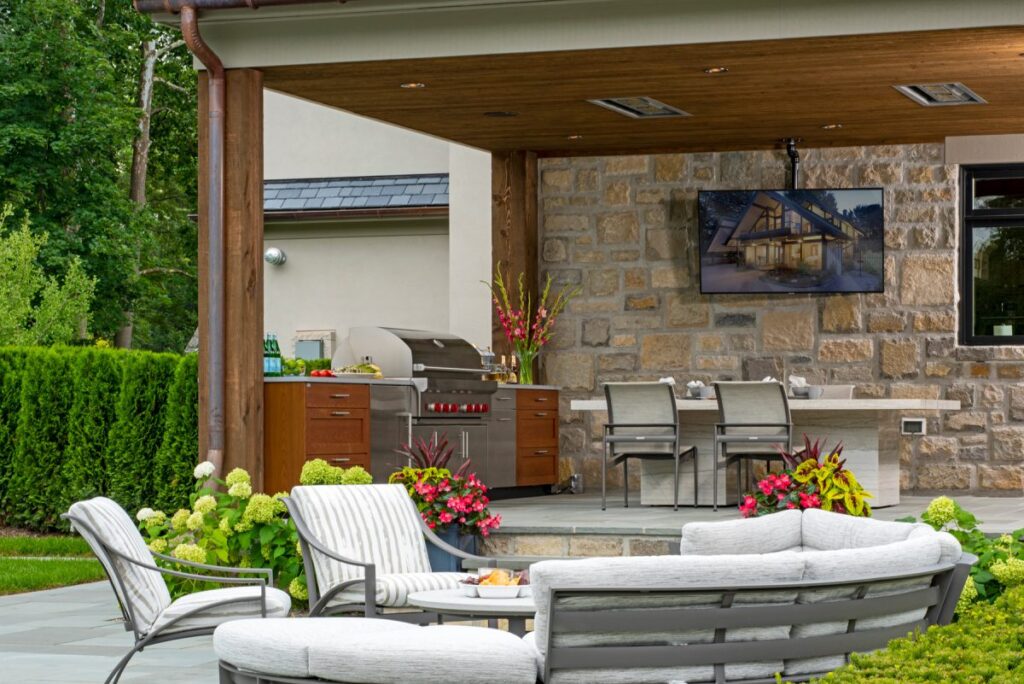
7. Incorporate Landscaping and Aesthetics
Landscaping can enhance the beauty and functionality of your outdoor kitchen. Consider adding plants, trees, and shrubs to create a more inviting and relaxing atmosphere. Use landscaping to define the boundaries of your outdoor kitchen and create a sense of privacy.
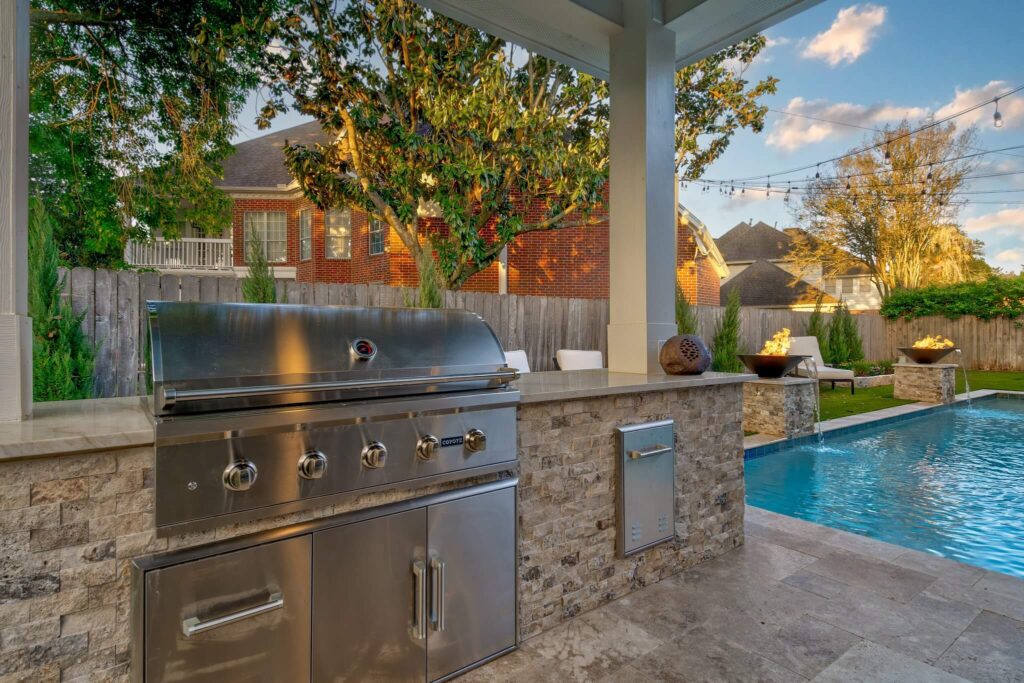
Choose plants that are appropriate for your climate and that require minimal maintenance. Consider adding herbs and vegetables to your landscaping for fresh ingredients.
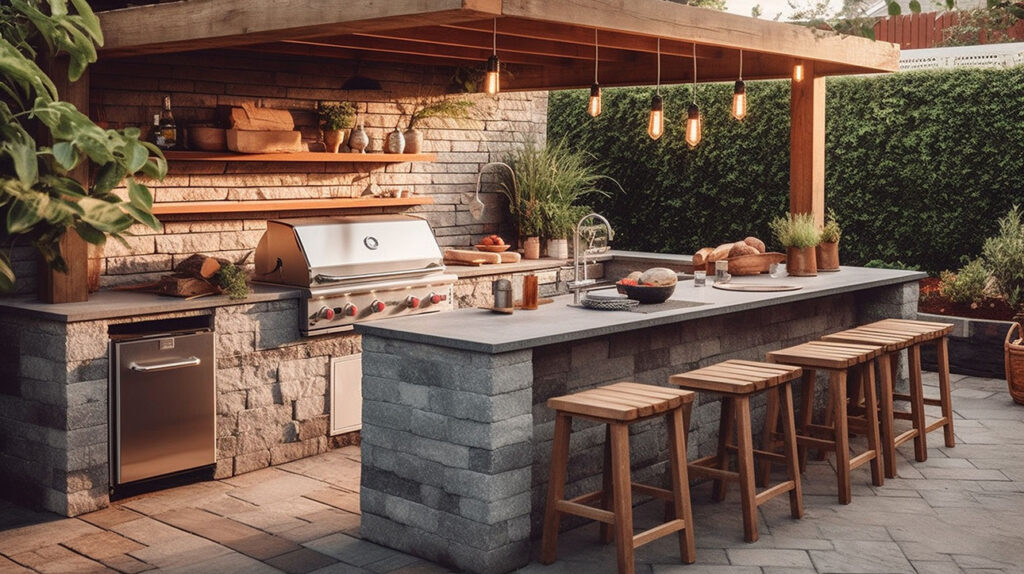
Pay attention to the overall aesthetics of your outdoor kitchen and select colors, textures, and finishes that complement your home’s exterior and your personal style.
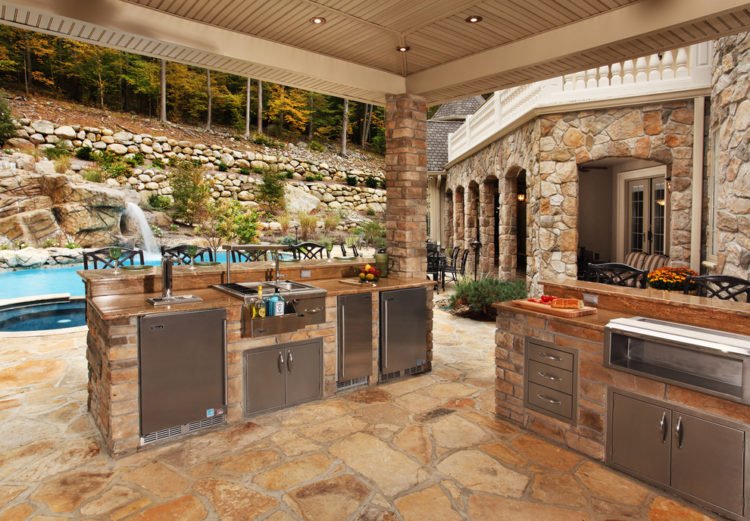
8. Budget and Timeline
Establish a realistic budget for your outdoor kitchen project and stick to it. Obtain quotes from multiple contractors and compare prices. Be prepared for unexpected expenses.
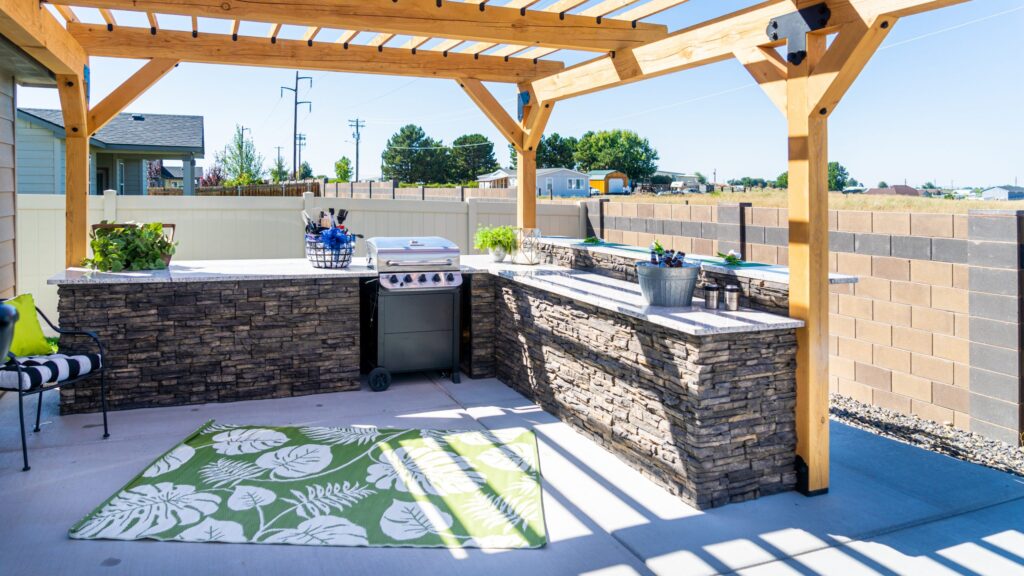
Create a timeline for your project and factor in time for design, permitting, construction, and landscaping. Be patient and allow for delays. Communicate regularly with your contractors to ensure that the project stays on track.
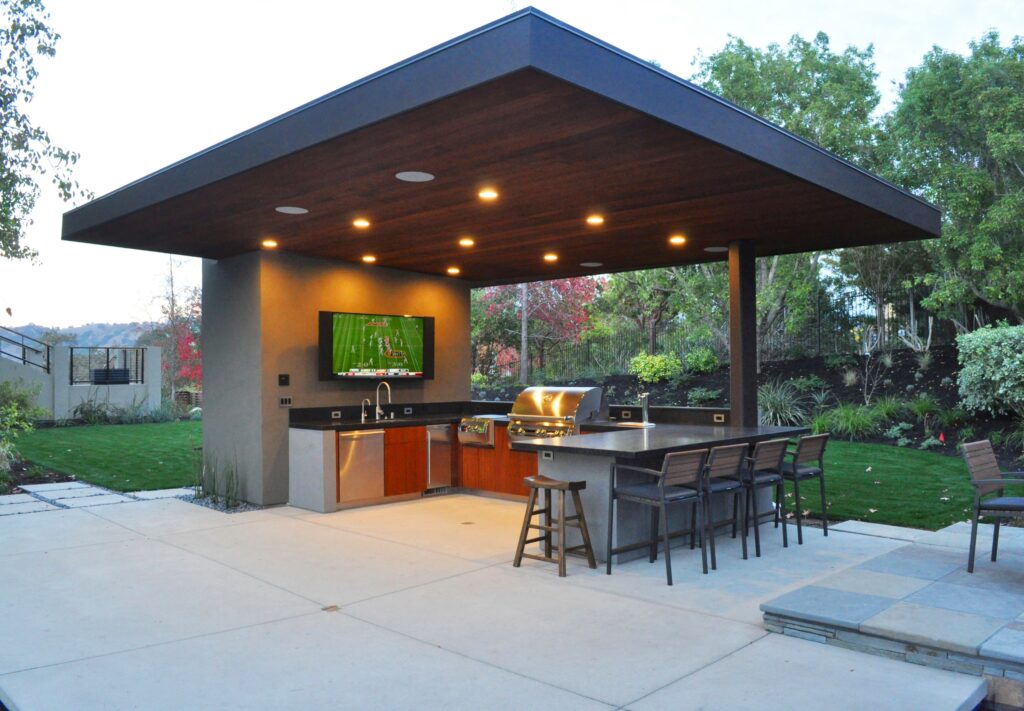
9. Permits and Regulations
Before you begin construction, check with your local building department to determine what permits are required. Comply with all local building codes and regulations to avoid potential fines or delays. Your contractor should be familiar with local permitting requirements.
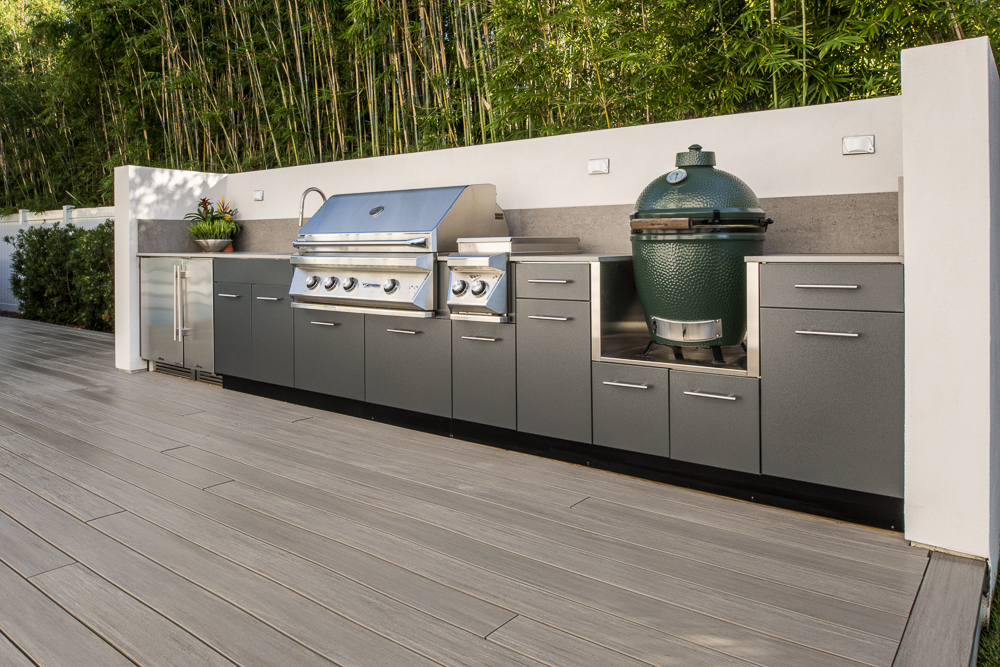
10. Professional Help vs. DIY
Decide whether you want to hire a professional contractor to build your outdoor kitchen or tackle the project yourself. Hiring a professional can ensure that the project is completed correctly and efficiently, but it will also be more expensive. If you are experienced with construction and have the necessary skills, you may be able to save money by doing it yourself. However, be prepared for the challenges and potential pitfalls of a DIY project. Be honest with yourself about your skill level and the time you have available. There is nothing wrong with handling some tasks yourself (like demolition or some landscaping), while leaving complex construction, plumbing and electrical work to the professionals.
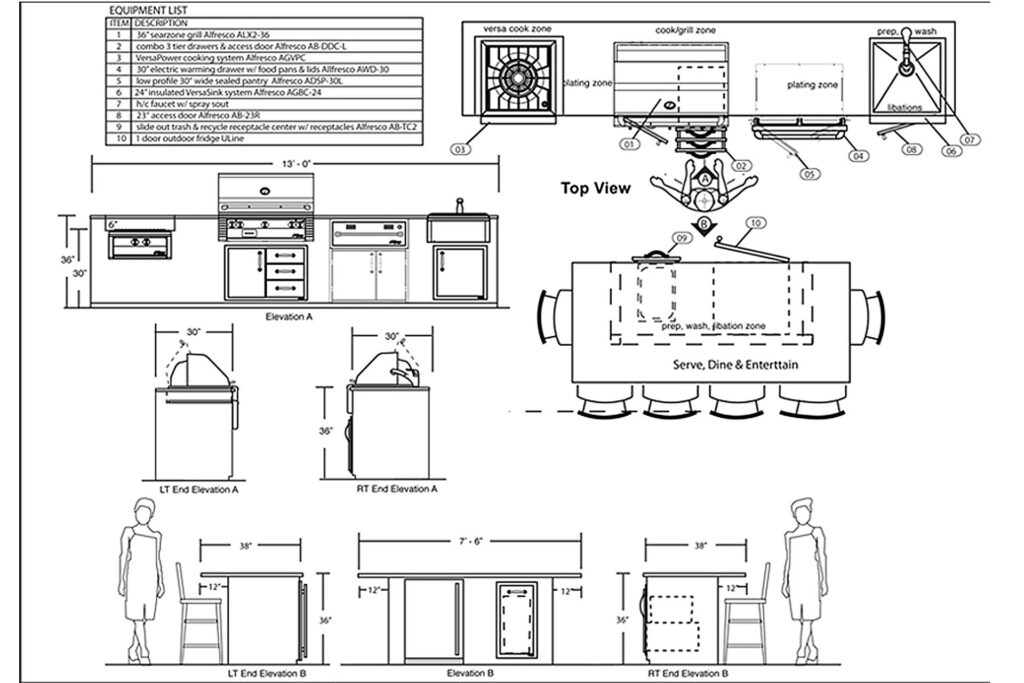
Specific Design Considerations
Island vs. Perimeter Layout
An island layout places the grilling and cooking area in the center of the space, often with seating around it. A perimeter layout places the cooking area along one or more edges of the space, leaving the center open for dining and lounging. The choice depends on your available space and preferred cooking style.
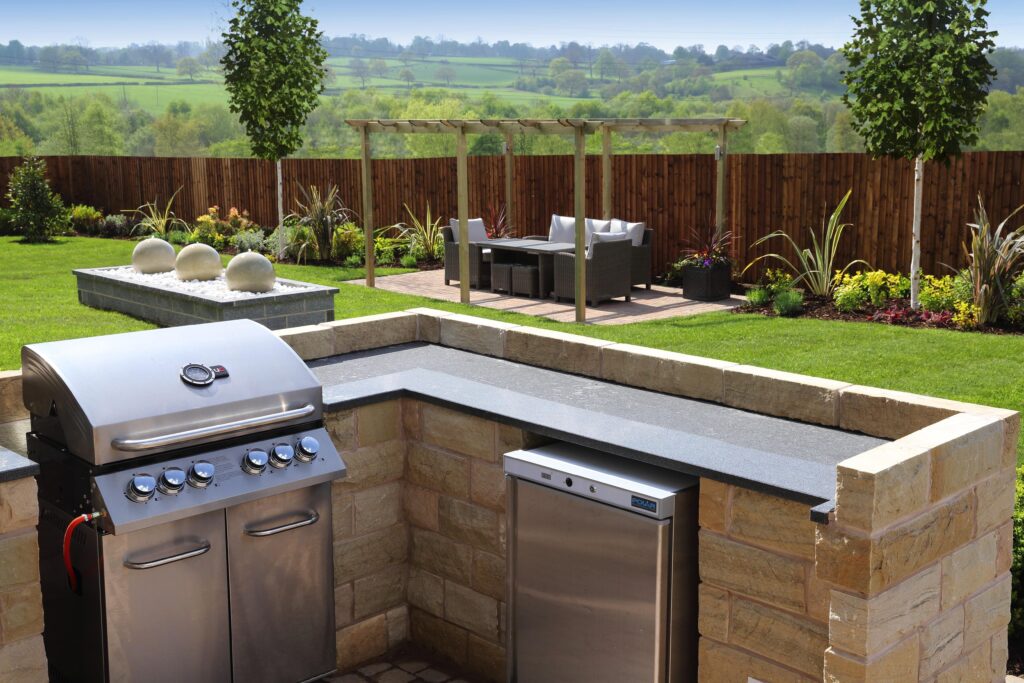
Built-In vs. Freestanding Components
Built-in components create a seamless and integrated look, while freestanding components offer more flexibility and portability. Built-in kitchens often require more planning and construction but provide a higher-end aesthetic.

Covered vs. Uncovered Kitchens
A covered outdoor kitchen provides protection from the elements, allowing you to use the space year-round. However, it also requires more construction and may limit natural light. An uncovered kitchen is less expensive and easier to build, but it is more exposed to the elements.

Tips for Maximizing Small Outdoor Spaces
Even if you have a small backyard, you can still create a functional and enjoyable outdoor kitchen. Here are some tips:

- Think Vertically: Use vertical space for storage and planting.
- Choose Compact Appliances: Opt for smaller grills, refrigerators, and sinks.
- Use Multi-Functional Furniture: Choose furniture that can be used for both dining and lounging.
- Create a Focal Point: Focus on one key feature, such as a grill or pizza oven, and design the rest of the kitchen around it.
- Keep it Simple: Avoid clutter and unnecessary features.
The Future of Outdoor Kitchens
Outdoor kitchens are evolving, incorporating smart technology, sustainable materials, and innovative designs. Expect to see more outdoor kitchens with features like:
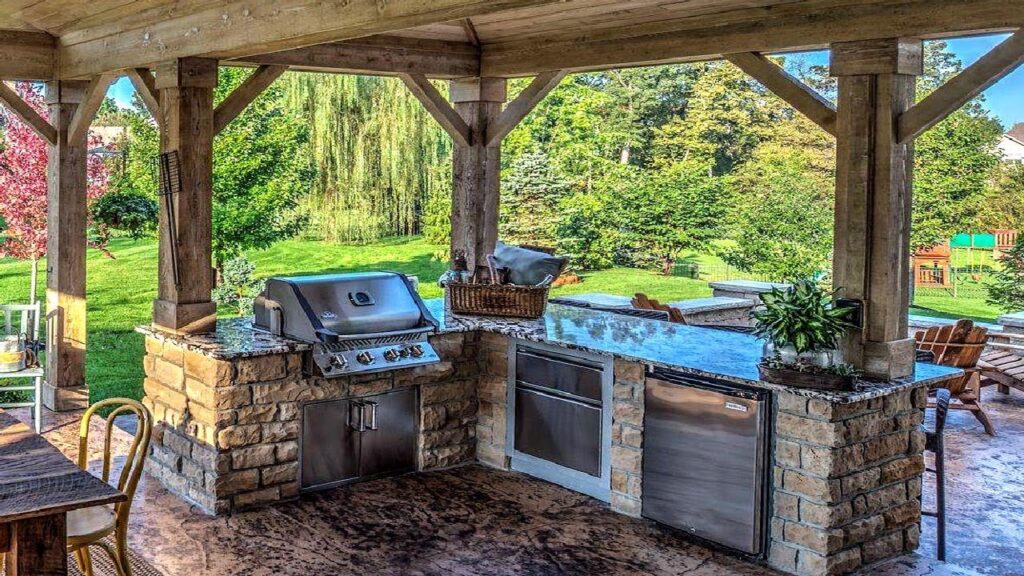
- Smart Grills: Grills that can be controlled and monitored remotely using a smartphone app.
- Solar-Powered Appliances: Appliances that are powered by solar energy.
- Rainwater Harvesting Systems: Systems that collect rainwater for use in the outdoor kitchen.
- Modular Kitchens: Kitchens that can be easily configured and reconfigured to suit different needs.
- Sustainable Materials: Countertops made from recycled glass or concrete, and cabinetry made from reclaimed wood.
Conclusion: Creating Your Outdoor Culinary Paradise
Planning an outdoor kitchen is an investment in your lifestyle and your home’s value. By carefully considering your needs, assessing your space, and choosing the right appliances and materials, you can create a truly exceptional outdoor culinary paradise. Remember to prioritize functionality, safety, and aesthetics, and don’t be afraid to seek professional help when needed. So, gather your inspiration, roll up your sleeves, and get ready to create the outdoor kitchen of your dreams! The possibilities are endless, and the rewards – delicious food, memorable gatherings, and a beautiful extension of your living space – are well worth the effort.
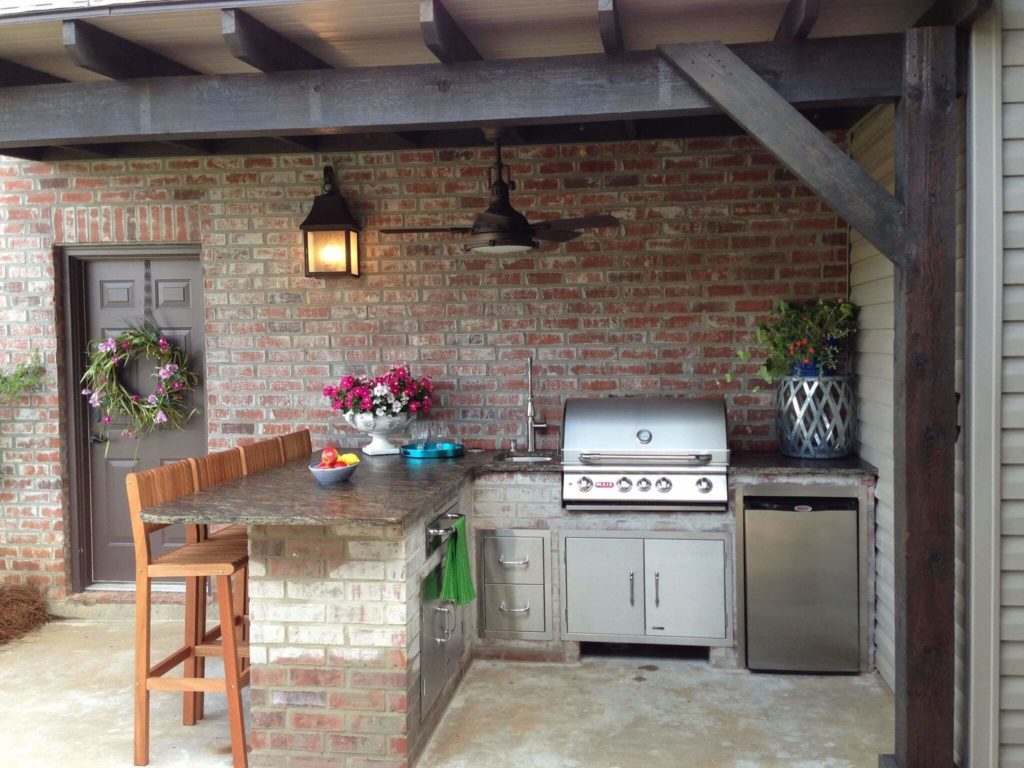
 Nimila
Nimila
